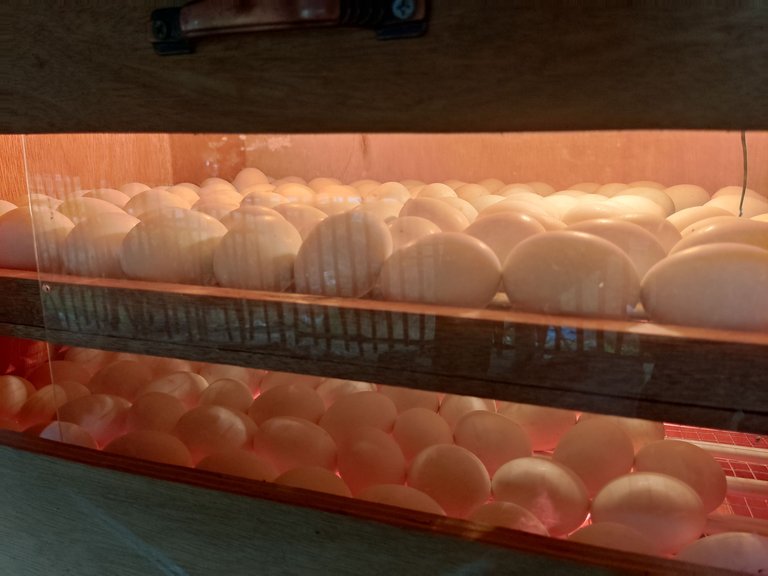
Today I visited the largest duck farm in the area where I live, three years ago or at the beginning of this duck farming business I was one of the employees who worked here, I worked here for approximately 1 year, during one year I learned a lot about raising broiler ducks and eggs. Today I will share my knowledge about animal husbandry with all my friends.
Business in the livestock sector is not an easy thing and it is also not a difficult business field. When starting a business on a farm, the most important thing is that we have to be aware of where we are caring for live animals and whenever we care for them, we are exposed to viruses or even die. The most important thing in raising livestock is that we must ensure that the cage is clean and sterile. Reducing feed costs is something that must also be paid attention to.
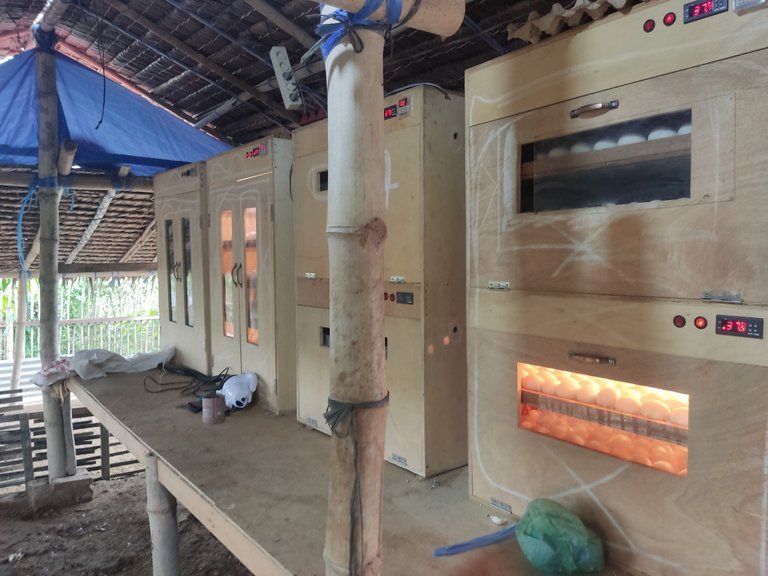
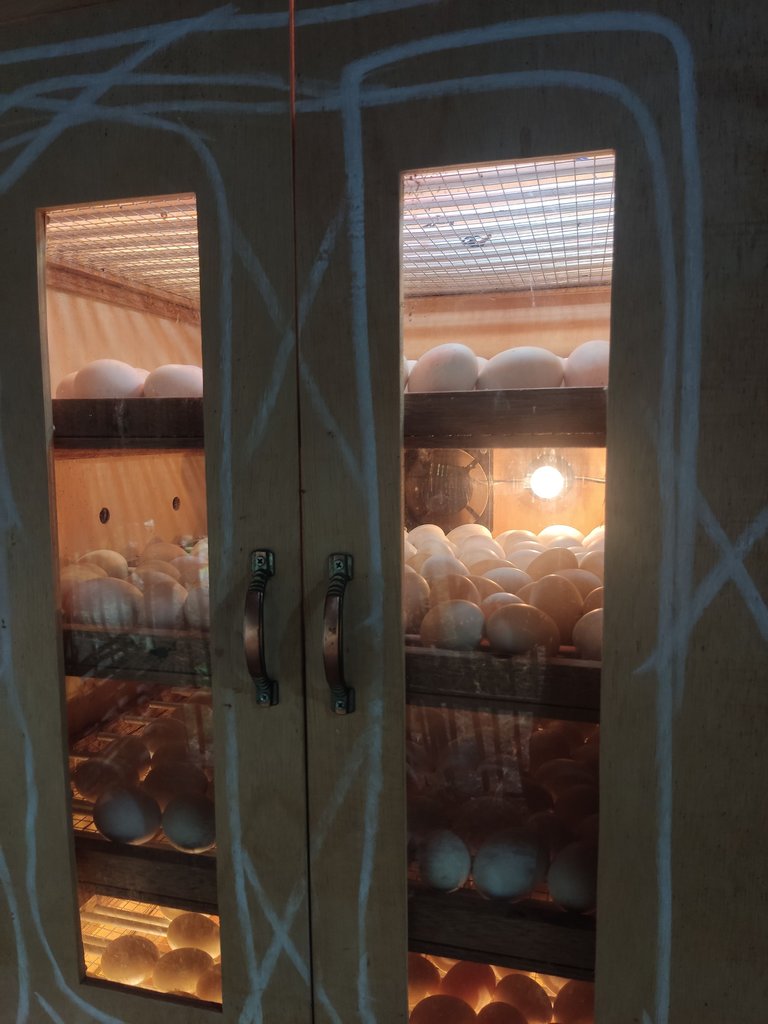
Here I only photographed 4 hatching boxes, the owner of this livestock has 8 hatching boxes but only 5 in the cage area. This hatching box/machine uses an automatic tool that works automatically for 24 hours without having to be looked after. Workers only maintain this hatching machine once every 3 days, namely the process of spraying disinfectant on the outside of the box, the hatching box must also be given several holes to maintain humidity and air changes, because there are many holes in each hole that can be passed through. All of them must be given magic lime. /lime to repel ants or similar pests.
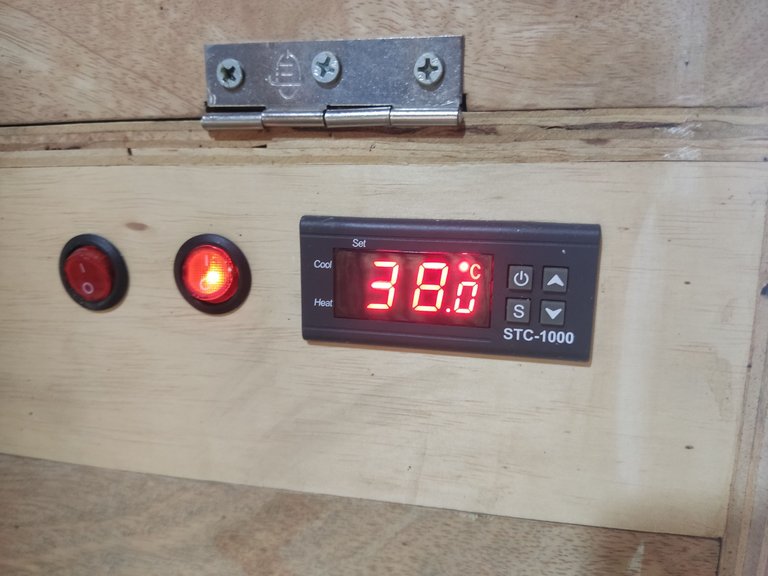
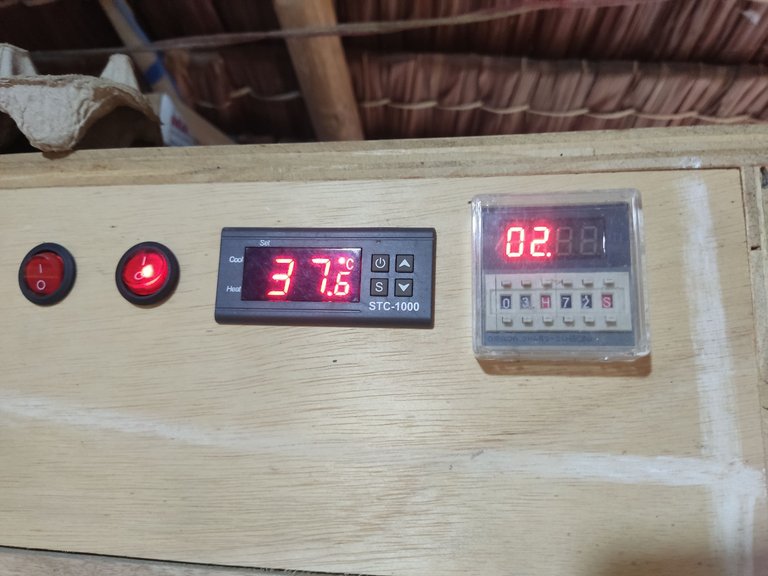
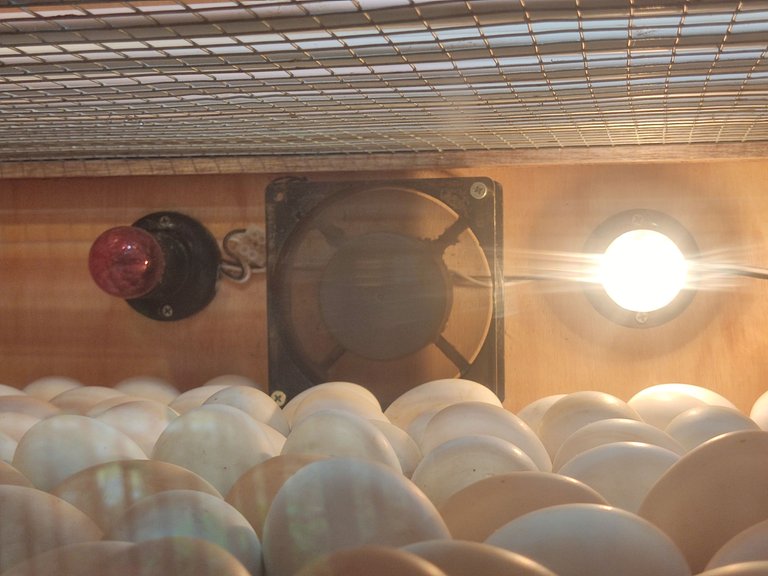
Making an incubator like this is very easy, the price of the tools we need is also very cheap, starting from $10-25, along with the tools needed for an automatic duck egg hatching machine.
Electric cable
Thermostat
Light fittings
Power plug
Light bulb
Thermometer
mini fan
dynamo
Unfortunately I couldn't take all the devices used here because there were no empty boxes.
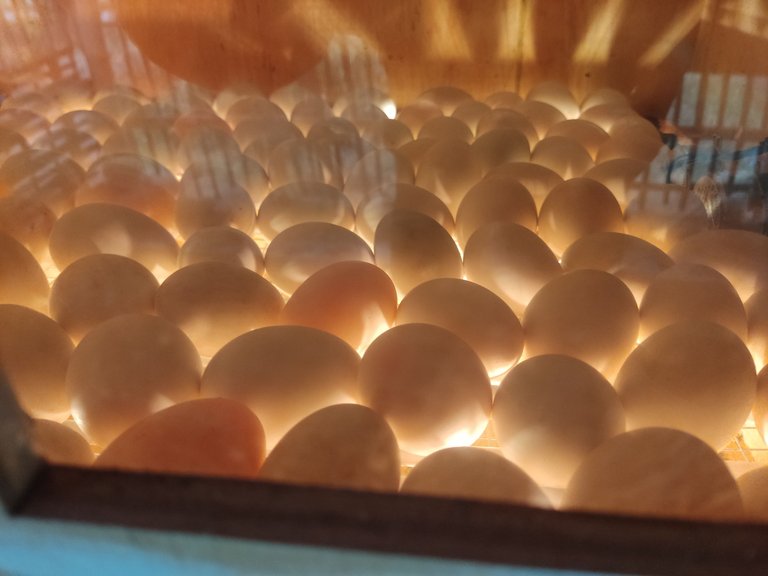
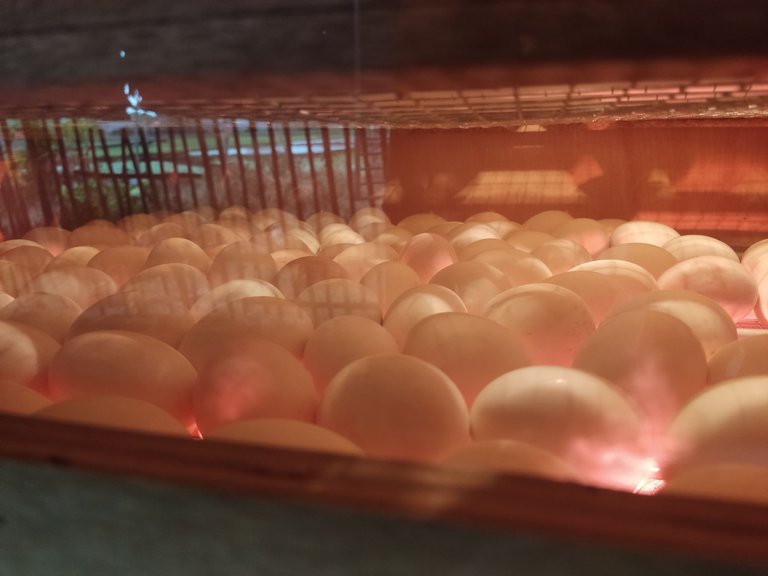
The eggs are put into the egg box at the age of two days after going through several processes, the following is the process for the eggs before they go into the hatching box.
not defective
clean when flashlighted
clean from dirt
wipe with a cloth dampened with disinfectant
leave for 5 hours
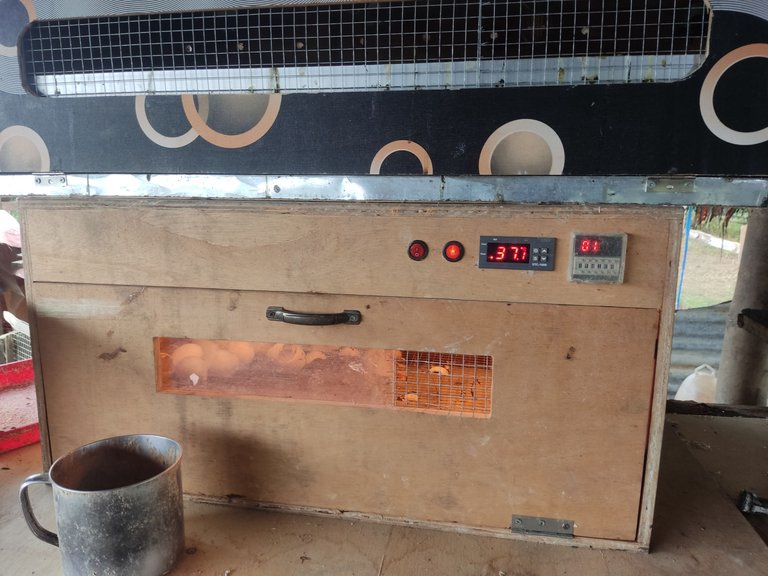
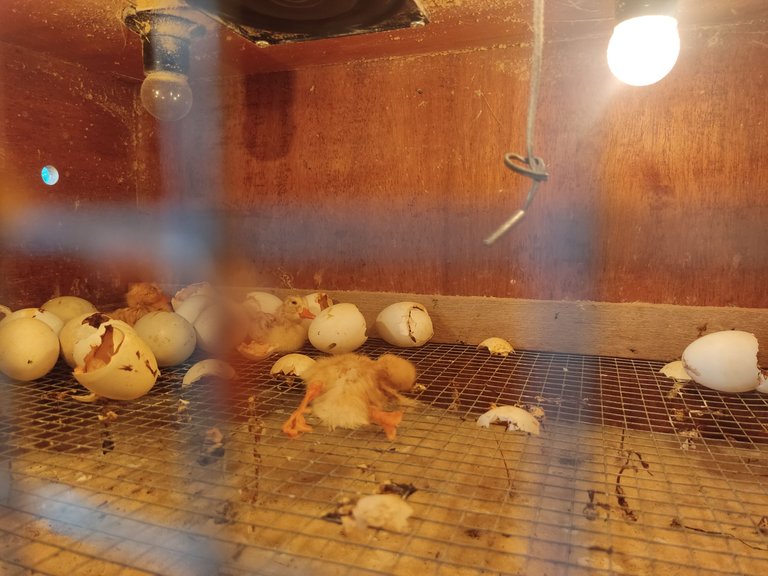
The first day after hatching, the ducklings are usually not immediately taken out of the hatching machine, usually they are left for one day so that the whole body of the ducklings is dry and the chicks have begun to adapt to the environmental temperature. Two days old, the new ducklings are put in a special box with a slightly different temperature. This really needs to be done so that the baby ducklings are not shocked by significant changes in temperature.
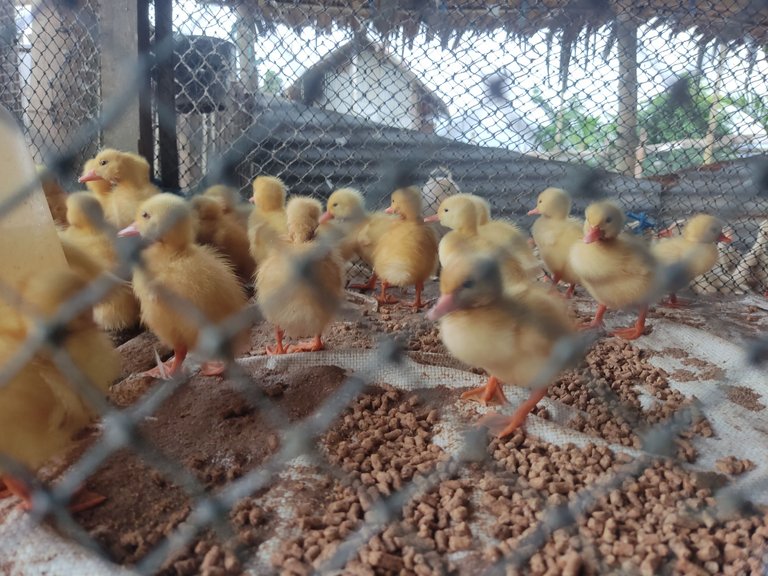
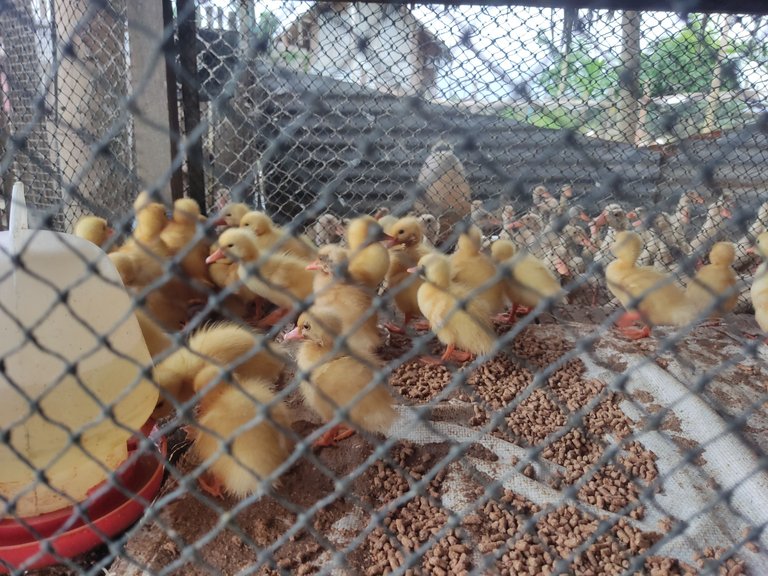
At the age of 5 or 6 days, the ducks have started to be moved to open cages with only light provided so that the temperature is not too cold. Ducklings aged 5-15 days are still fed a full diet of special pellets. In this cage the chicks begin to learn to adjust to the environmental temperature.
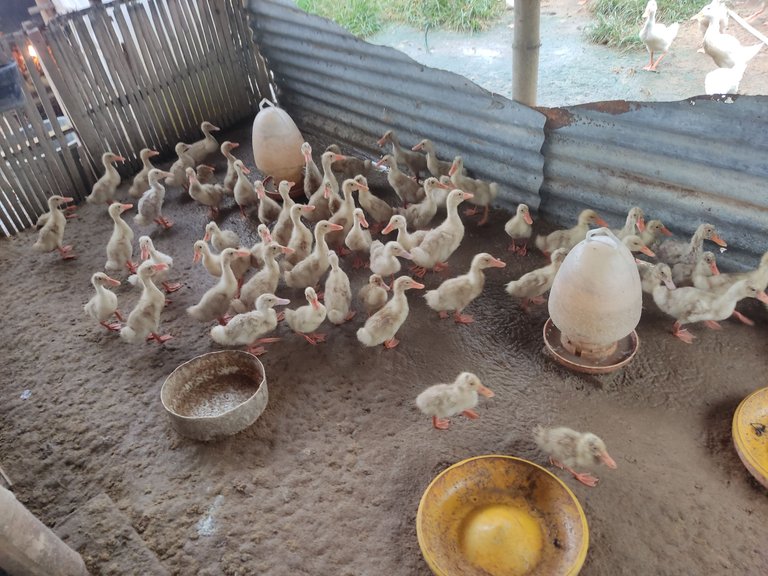
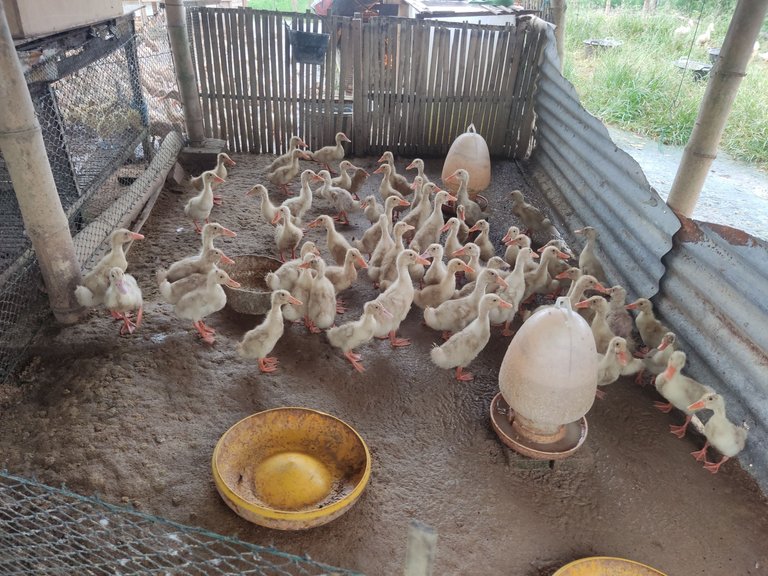
At the age of 15 days the ducks have started to be put in a cage with a ground floor, here the ducks also start to learn and adapt to the temperature of the surrounding soil, in this cage the ducks only live for 1-3 days. The area of the cage should not be too large and the area There must be a roof that does not allow sunlight to enter as well as rainwater
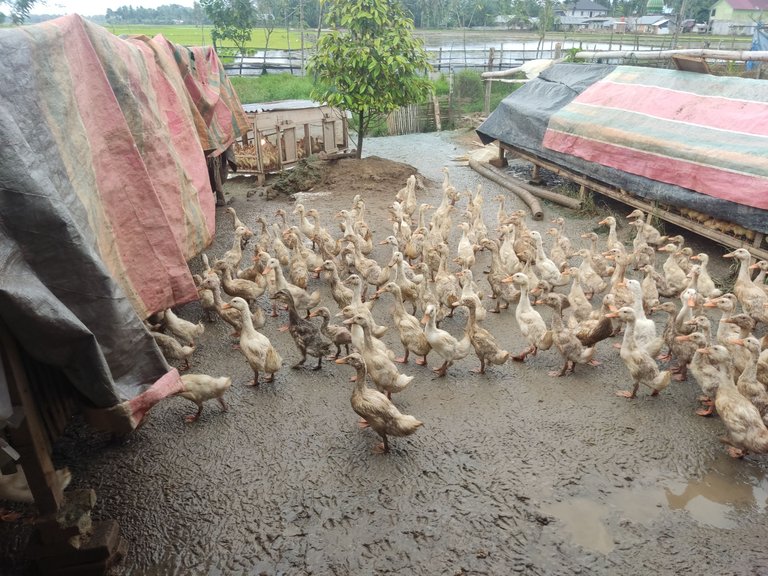

Age 18-20 days. Ducks have started to be put in semi-open cages where 80% of the cage area is open and 20% is closed. Ducks have started to learn to deal with all weather and swim in the pool that has been provided. Age 1.5 months. Ducks in this cage and given food 3 times a day, the food given is usually bran mixed with kale.
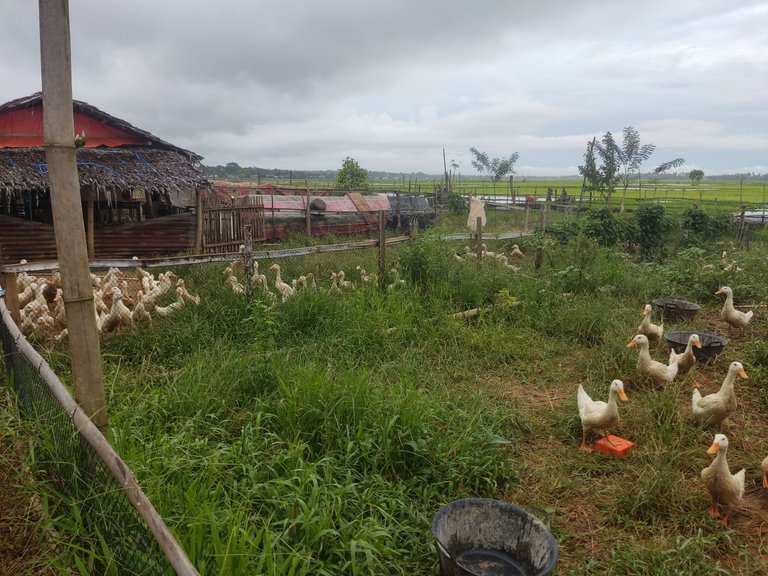
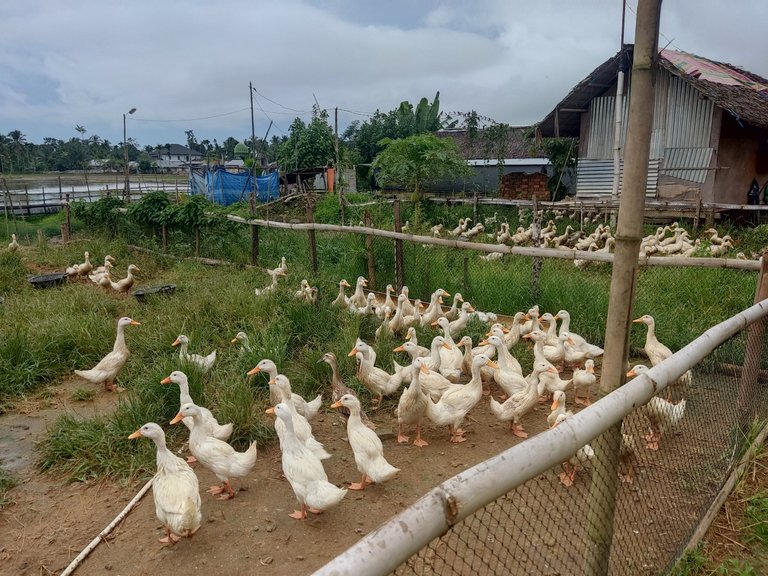
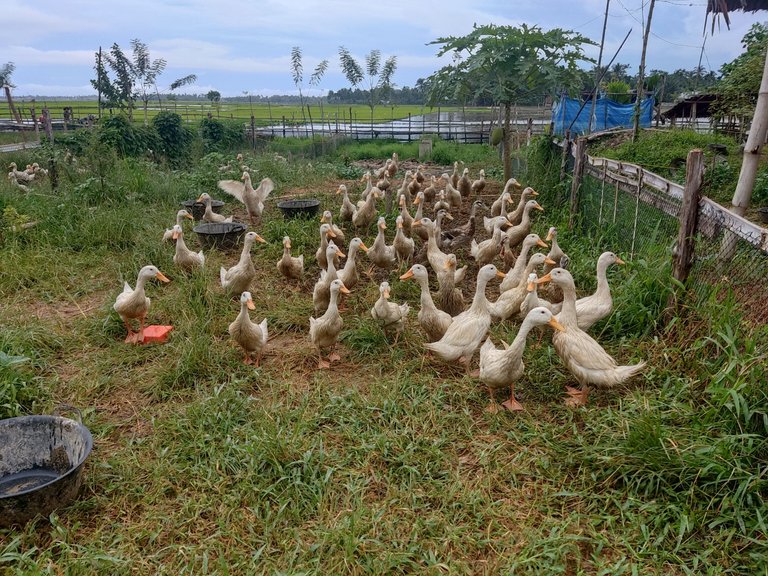
1.5 month old ducks must be put in a fully open cage like the one in this picture, this is done because the ducks cannot be released wild into the rice fields because farmers have started planting rice, releasing them in this cage area is also very efficient, Caring for ducks of this age in a cage is very expensive, because the ducks must be given full feed twice a day. If the ducks are released into the wild in the rice fields, the owner does not have to feed the ducks at all for approximately 4 months. When in a cage like this, the feed is given bran mixed with water spinach and boiled chicken intestines. You can see the two photos below of the process of chopping chicken intestines after boiling:
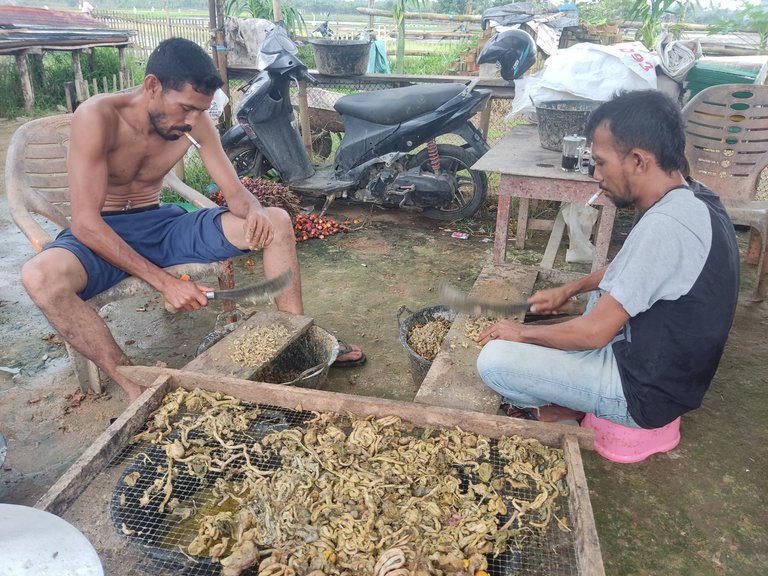
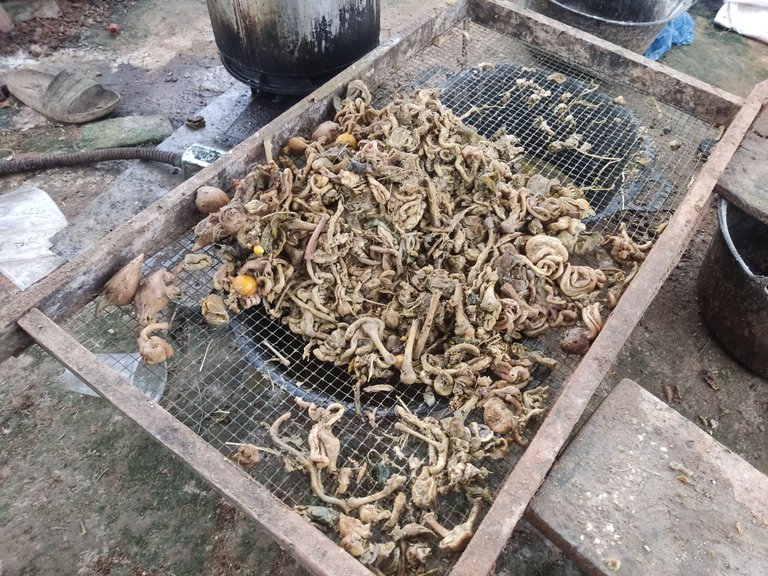
| Camera | Smartphone POCO X3 Pro | |
|---|---|---|
| MAP | https://maps.app.goo.gl/Z1yuKC29NR5zYNYbA |
| Category | Duck farming | |
|---|---|---|
| Writer | @biancamaura |
| Location | indonesia |
|---|